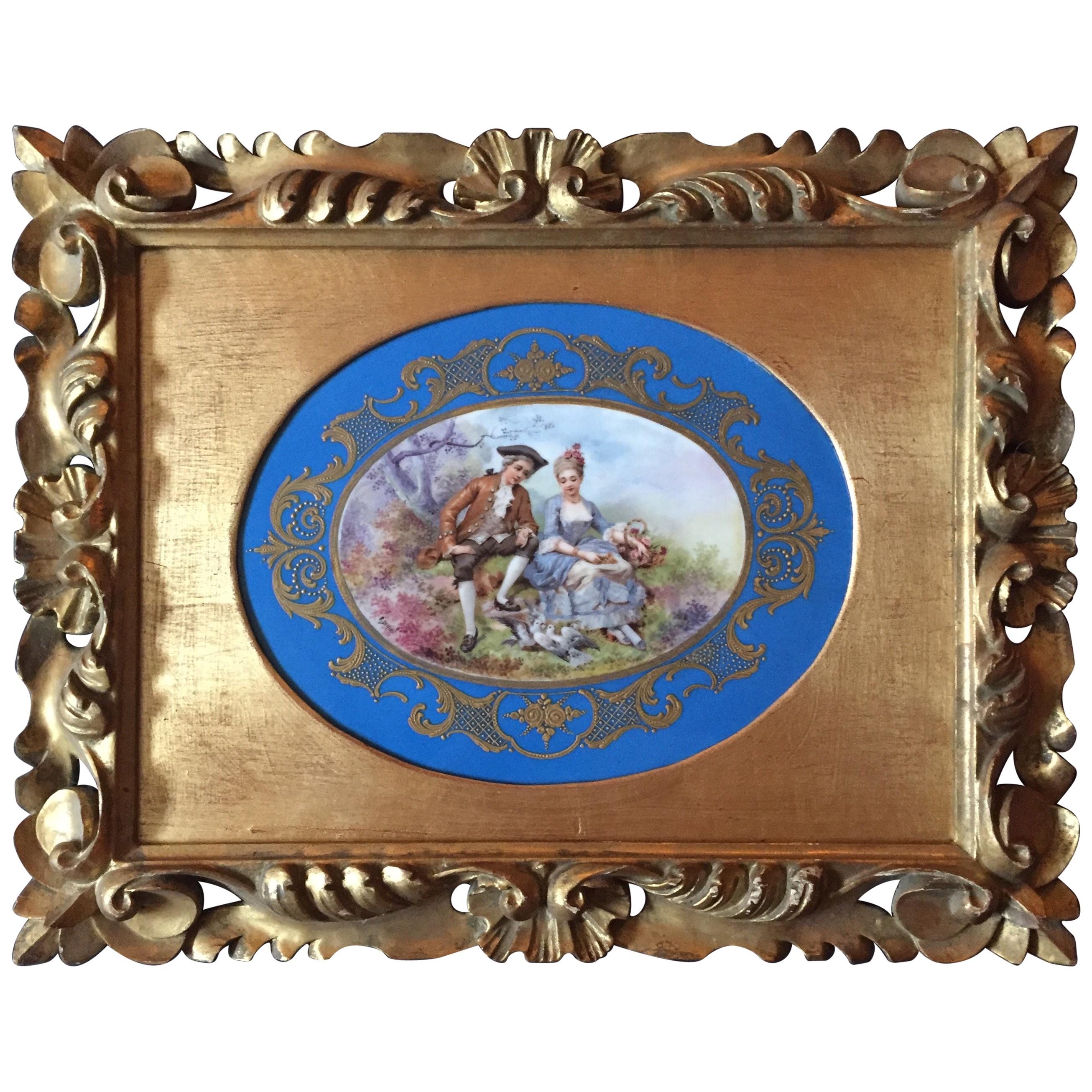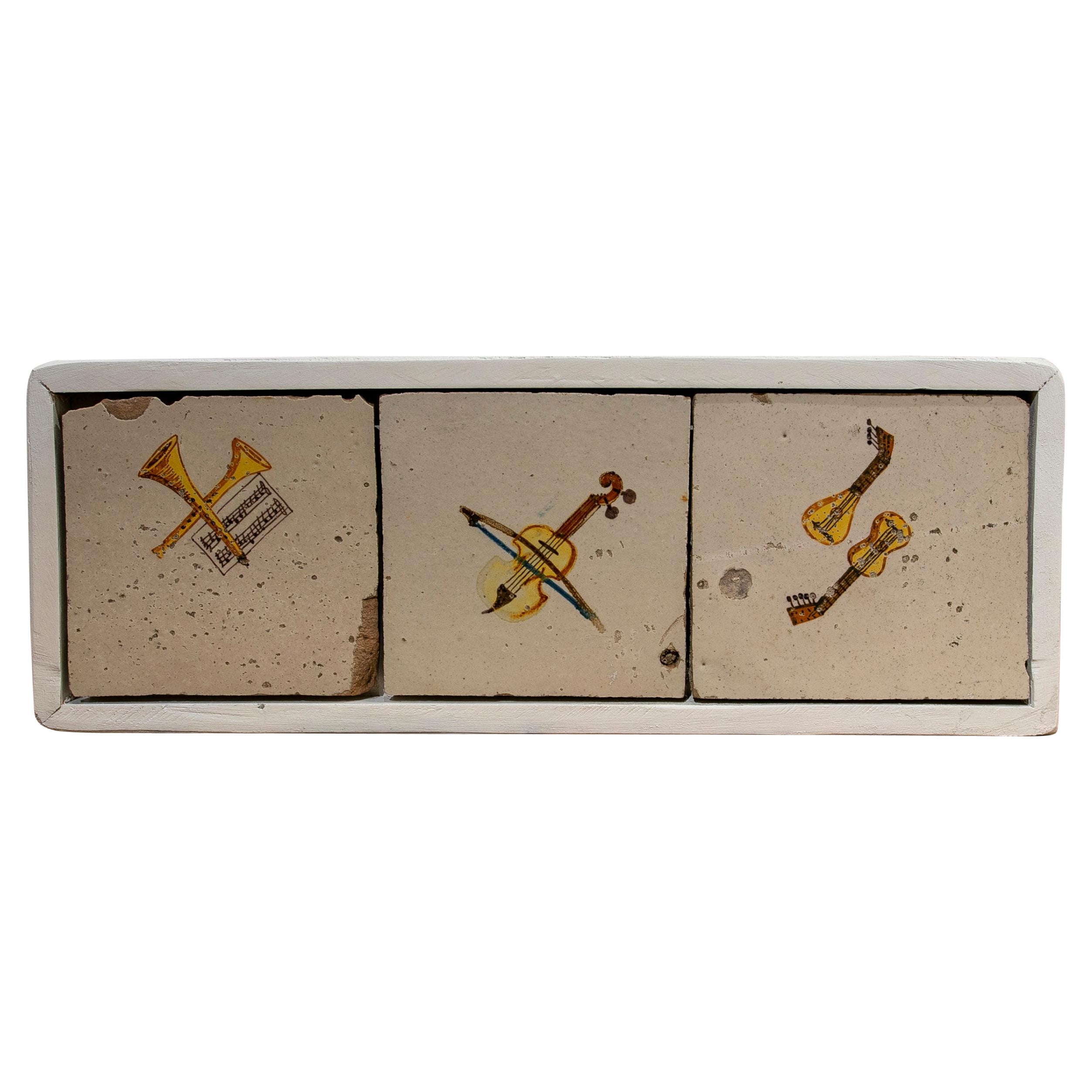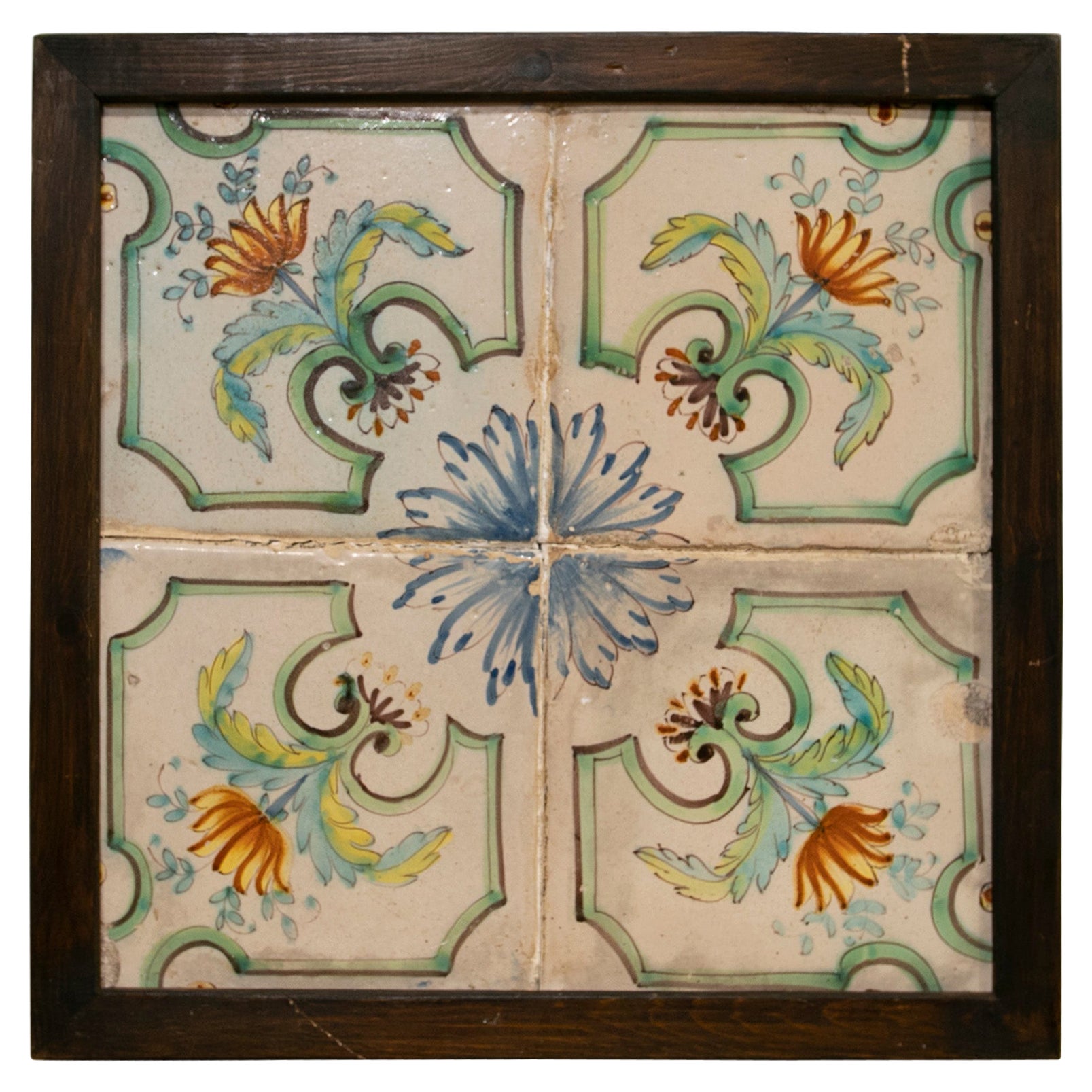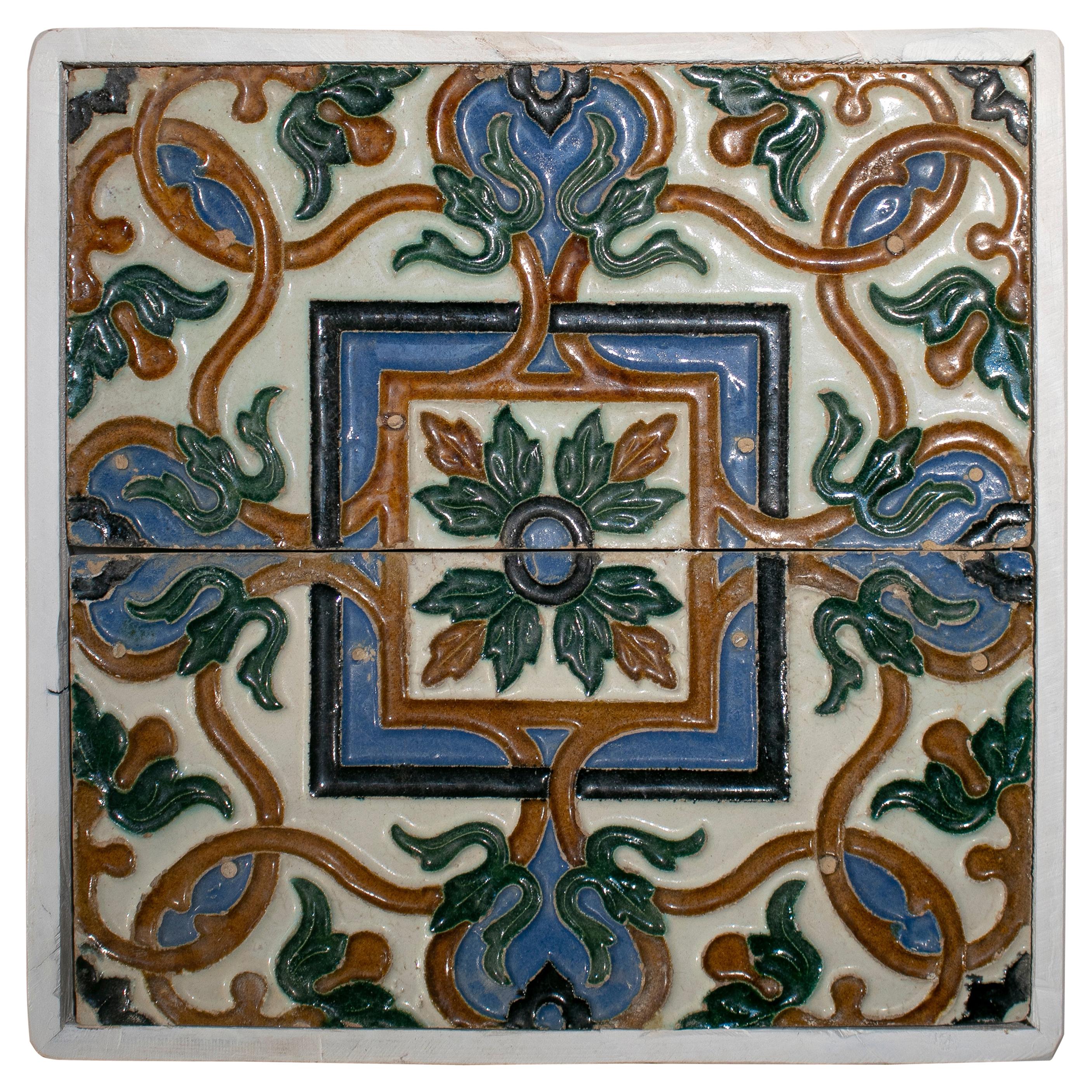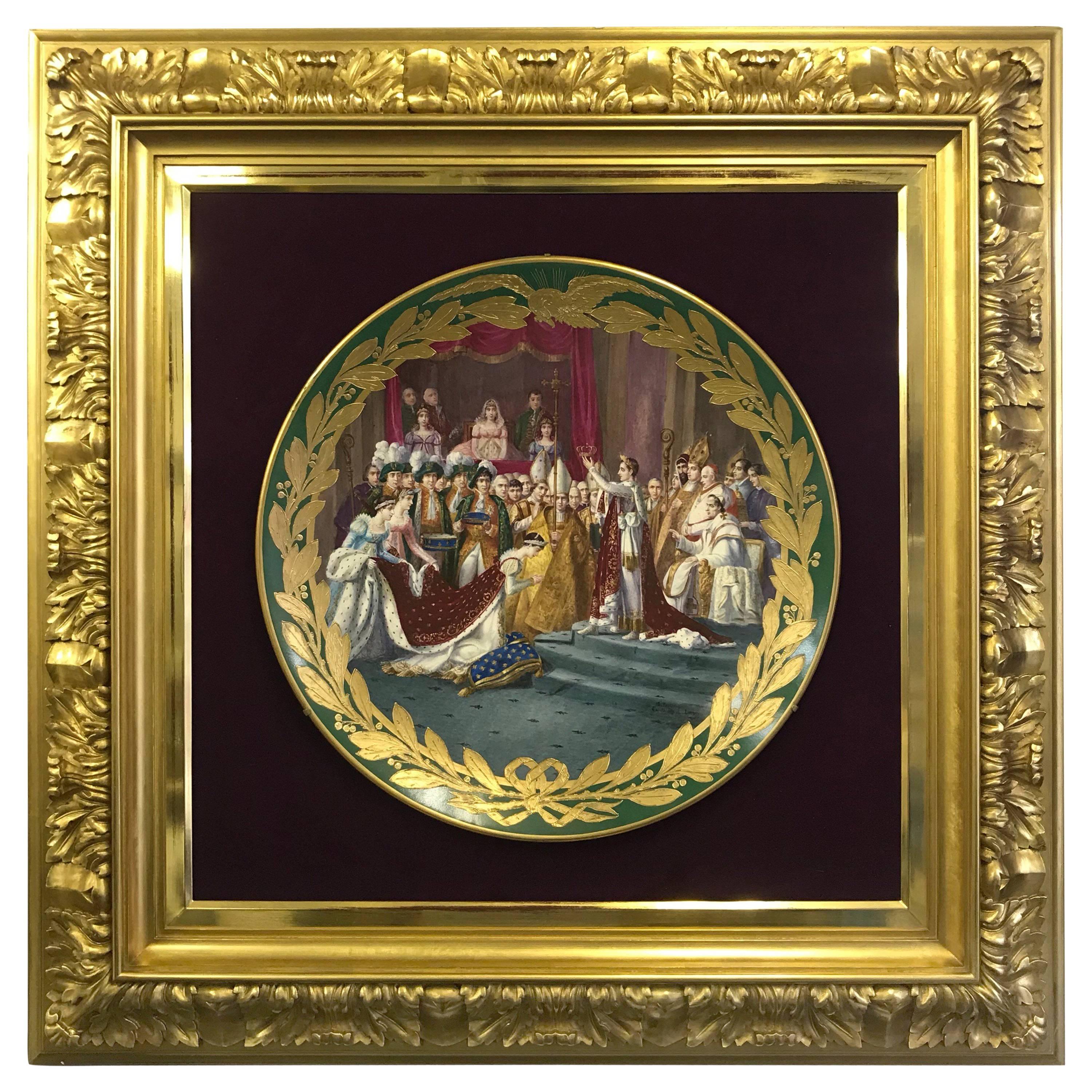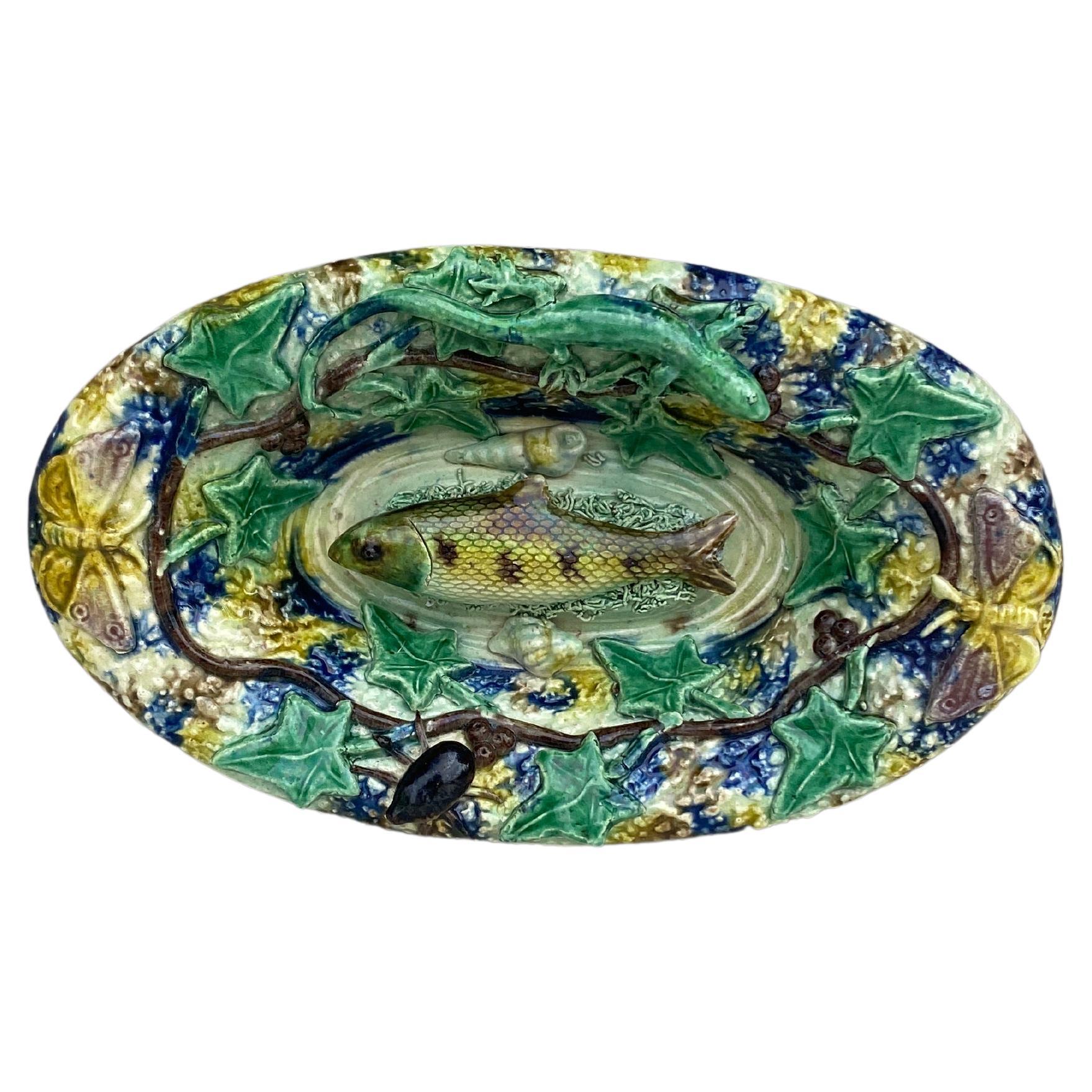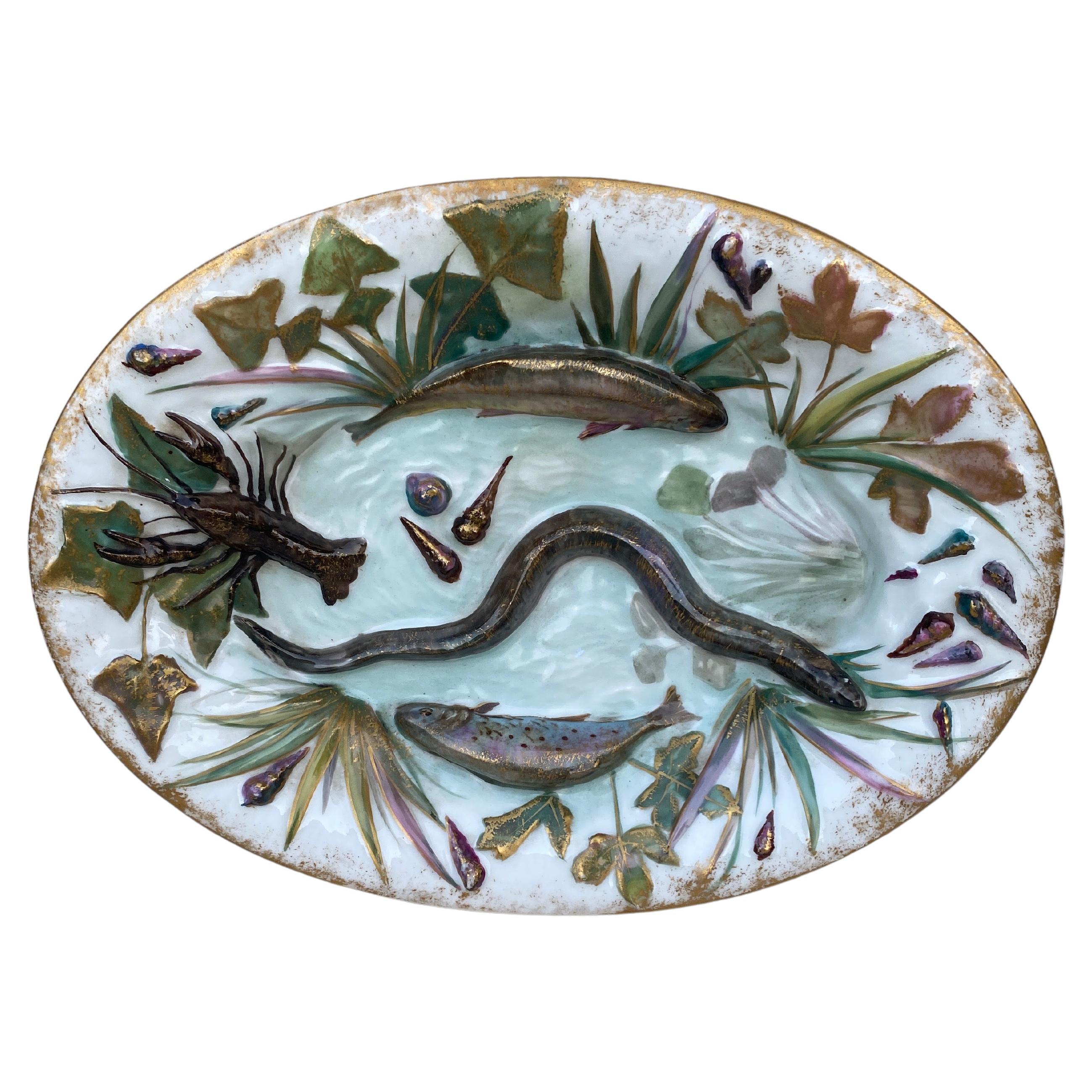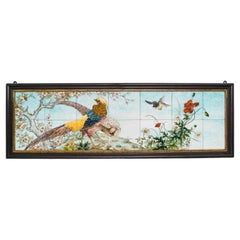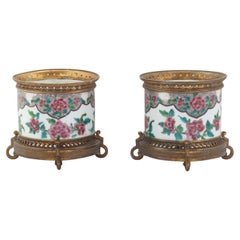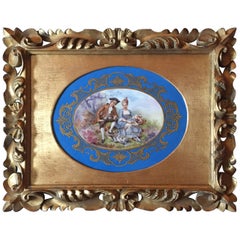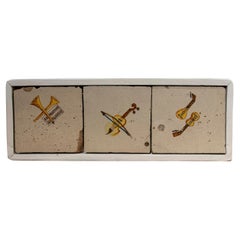
19th Century Enameled Sèvres Faience Impressive Framed Charger
View Similar Items
19th Century Enameled Sèvres Faience Impressive Framed Charger
About the Item
- Creator:Manufacture Nationale de Sèvres (Manufacturer)
- Dimensions:Height: 1.58 in (4 cm)Diameter: 27.17 in (69 cm)
- Style:Renaissance Revival (Of the Period)
- Materials and Techniques:
- Place of Origin:
- Period:
- Date of Manufacture:circa 1885
- Condition:
- Seller Location:Saint-Ouen, FR
- Reference Number:1stDibs: LU2612319689342
Manufacture Nationale de Sèvres
A maker of exemplary European ceramics for hundreds of years, Manufacture Nationale de Sèvres has produced porcelain of the highest quality since 1740.
The factory enjoyed royal patronage from its earliest days, and its most prominent patrons in the late 1700s — King Louis XV of France and his mistress, Madame de Pompadour — commissioned some of the period’s most elegant and striking pieces (only the truly wealthy could afford porcelain at this time). The company was originally established in Vincennes but was moved at the request of Madame de Pompadour, in 1756, to Sèvres, near Versailles, so that its operations would be closer to her château.
Sèvres became a mighty and much-revered factory working under a special grant from King Louis XV — the company’s owner as of 1759 and whose abundance of orders for special state gifts put financial strain on the company. Madame de Pompadour is said to have commissioned Sèvres to create an entire indoor garden of porcelain botanicals, for example.
While Sèvres gained a sterling reputation for its soft-paste porcelain wares, the company was late in entering into the production of hard-paste porcelain.
Hard-paste porcelain is the most common type of Chinese porcelain, then a widely exported and profitable product that was not made in Europe until the 18th century. The resources at Sèvres were largely relegated to meeting the demands of Louis XV, and secondly, it did not acquire the secret formula for hard-paste porcelain until 1761. Until it obtained the coveted secrets behind hard-paste porcelain from a chemist named Pierre-Antoine Hannong — and, years later, gained access to the elusive raw materials to make hard-paste porcelain — Sèvres produced soft-paste porcelain for decades that was widely celebrated but is comparatively a far weaker type as opposed to the hard-paste productions of the company’s rival, Meissen, in Saxony, the first to produce true porcelain outside of Asia.
The artisans at Sèvres applied the rarest and most difficult-to-produce colors to their decorative objects and dinner services. One such color, the bright bleu de roi, became the manufacturer’s signature shade and is found on many of their objects. Sèvres also experimented with rarely glazed or unglazed works that bore no decoration at all — bisque porcelain, French for “biscuit,” refers to unadorned white porcelain sculptures made at Sèvres that resemble white marble after being kiln-fired.
Sèvres marks were applied over the glaze or rendered with cuts by a sharp tool — authentic Sèvres porcelain is most commonly marked with two interlaced Ls that are painted in blue and enclose a third letter. Painters and potters were tasked with affixing marks to record their role in the creation of a particular piece, and as a lot of these artisans’ names are recorded in archival factory materials — and there is also much to be learned at the Sèvres museum — it’s likely that you can accurately identify your Sèvres piece.
Find antique and vintage Manufacture Nationale de Sèvres vases, urns, sculptures and more on 1stDibs.
- Théodore Deck (1823-1891) Faience Paneled Fourteen-Tile Rectangular Wall PlaquBy Theodore DeckLocated in Saint-Ouen, FRA Théodore Deck (1823-1891) Faience Paneled Fourteen-Tile Rectangular Wall Plaque Polychromic Earthenware very finely hand-painted, designed with a couple of pheasants among vegetat...Category
Antique 1870s French Japonisme Decorative Art
MaterialsFaience, Wood
- French 19th Century Pair of Porcelain Cache-PotsLocated in Saint-Ouen, FRPair of polychromed hand painted porcelain with Japonisme floral decoration Ormolu-mounted with open-worked base and rim Louis XVI Style circa 1880.Category
Antique 1870s French Chinoiserie Planters, Cachepots and Jardinières
MaterialsOrmolu
$1,927 Sale Price / set20% Off - A Théodore Deck (1823-1891) Enamelled Faience Soliflore Vase circa 1875By Theodore DeckLocated in Saint-Ouen, FRThéodore DECK (1823-1891) A polychromatic enamelled earthenware soliflore and quadrangular shape vase with Sino-Japanese inspiration design of flowers and geometrical friezes all around. Impressed uppercase mark "TH.DECK" under the base. Circa 1875 Born in Guebwiller in Alsace, Théodore Deck trained as a ceramist in his home region, then in Germany. He went into partnership with his brother, Xavier Deck, to create his own factory in Paris in 1858. At the Exhibition of Industrial Arts in 1864, he presented pieces covered with transparent enamels that were not cracked, and then made his first attempts at reliefs under transparent enamels. He developed a bright turquoise color, famously renowned as "Bleu Deck". It is this nuance that we find on the salamander represented on this vase. In 1887 he published a treatise entitled "La Faïence", in which he explained some of his discoveries. That same year, he became director of the Manufacture de Sèvres. Theodore Deck (1823-1891) is a French ceramist born in Guebwiller in Alsace. He is passionate about chemistry and the physical sciences. In 1841, he joined the master stove maker Hügelin father as an apprentice in Strasbourg. In two years, he learned of the methods inherited from the 16th century, such as the encrustation of colored pastes in the style of Saint-Porchaire. This apprenticeship did not prevent him from spending his free time draw-ing or modeling clay in the studio of sculptor André Friederich. Escaping military service, he made a tour of Germany as is the tradition with fellow Alsatian stove-makers. The quality of his work allows him to obtain important orders in Austria for the castles of the provinces and the imperial palaces, in particular for the palace of Schönbrunn. He continues his journey in Hungary to Pest, to Prague, then, going north through Dresden, Leipzig, Berlin and Hamburg. On the strength of his apprenticeship, he arrived in Paris in 1847. Recommended by Hügelin, he went to the stove factory of the Bavarian potter Vogt, located rue de la Roquette. The Revolution of 1848 interrupts production and Deck decides to return to his hometown. His family then advised him to set up a small terracotta workshop: he made a few busts, statuettes, vases, lamps and copies of famous antiques there. Aware that this situation would not allow him to provide for himself properly, he returned to Paris in 1851 where he was employed by the widow Dumas, daughter of the earthenware maker Vogt for whom he had worked. Hired as a foreman, he supplied the drawings and models to the workers, while working the land himself. The following year, he made the decision to settle not far from his former employer at 20, rue de la Fontaine-au-Roi, probably using his ovens. His brother, Xavier Deck, joins him. It was officially in 1858 that the Deck brothers created their business and settled in Paris at 46, boulevard Saint-Jacques. Initially, the brothers only carry out coatings for stoves. But the business is going so well that barely a year after their installation, they want to diversify their production and engage in ceramics for the cladding of buildings as well as in shaped parts. Deck is interested in politics. In 1870, he opted for French nationality and was elect-ed deputy mayor in the 15th arrondissement of Paris. In 1861, at the Salon des arts et industries de Paris, which was held on the Champs-Élysées, Théodore Deck exhibited his works for the first time: these were pieces with an inlay decoration called “Henri II” and others. pieces covered with turquoise blue enamel or decoration in the style of Iznik ceramics.If he wins a silver medal, reviews are mixed, however. The following year, on the occasion of the Universal Exhibition of 1862 in London, he won over English customers. He surprised by presenting, like the previous year, his Alhambra Vase...Category
Antique 1870s French Japonisme Vases
MaterialsFaience
$4,752 Sale Price30% Off - Very Impressive French 19th Century Neoclassical Lyre-Form ClockBy Etienne LeNoirLocated in Saint-Ouen, FRAn impressive French 19th century Neoclassical Lyre-form clock with jeweled pendulum. Amazing quality white and yellow marble 19th century French Lyre-Form clock mounted all over with gilt bronze...Category
Antique 1850s French Louis XVI Mantel Clocks
MaterialsCrystal, Marble, Enamel, Ormolu
- Diana the Huntress, 19th Century French Enamel TazzaBy Théophile SoyerLocated in Saint-Ouen, FRDiana The Huntress A 19th century French Enamel Tazza Tazza with scalloped edges in polychrome enamel, painted on copper with red background and gold highlights representing Diana the Huntress painted partly in grisaille; translucent and red counter-enamel. Paris, Théophile Soyer (1853-1940) circa 1880 Théophile Soyer (23 July 1853-20 February 1940) His father, Paul Soyer, gold medalist in 1878, created after the 1870 war the famous work-shop at 4 bis, rue Saint-Sauveur in Paris, which produced innumerable pieces, including some for jewellery, furniture and bronze. Théophile took classes with Yvon and Levasseur and made his debut at the 1870 Salon with an enamel copy of a work by Le Barbier aîné. He then exhibited regularly from 1875 to 1882. After his marriage in 1879 to Léa, née Dejoux, nicknamed Lucie, a pupil of Lamunière, he shared the management of the firm with her, just as he shared the gallery in her company at certain exhibitions. He won a silver medal at the Universal Exhibition of 1889, then a gold medal at the one in 1900. He was president of the Société des éclectiques, a humorous society founded in 1872, and vice-president of the Chambre de la céramique et du verre de l'Union. Founded in Paris during the Second Empire, the workshop directed by Paul Soyer (1832-1903) and then his son Théophile (1853-1940) produced various objects, paintings, mirrors, trays, vases, bonbonnières. Based on new sources of information, an article in l’Objet d’Art magazine, publications Faton, presents an update of the Soyer biographical elements and an analysis of their production marked by the neo-Renaissance and then Art Nouveau. A book of accounts allows us to observe the models of enamel "paintings", often from Meissonier’s work. The Soyers have greatly contributed to satisfying the taste of painted enamels that grew from the 1860s to the 1900 exhibition...Category
Antique 1880s French Napoleon III Decorative Dishes and Vide-Poche
MaterialsCopper, Enamel
- Impressive French 19th Century Neo-Greek Style Bronze Nine-Lights CenterpieceBy Georges Emile Henri ServantLocated in Saint-Ouen, FRAn impressive French 19th century Neo-Greek style bronze nine-lights center piece In patinated and gilt bronze, engraved on the body of foliage and rings, the collar decorated with a frieze of palms in bas-relief. It is held by a tripod base decorated with shards, foliage, and fins, in the center a mask of man. Surmounted by three arms, nine-lights ending in lion’s paw. Curved triangular base with ivy friezes, and palm-leaf feet. Attributed to Georges Emile Henri...Category
Antique 1860s French Napoleon III Vases
MaterialsBronze
- Burmantofts Faience "Aesthetic Movement" Plaque 19th c.By Burmantofts PotteryLocated in Great Barrington, MAThis extremely large Faience pottery plaque is the epitome of the "Aesthetic Movement" style at it's best! Thick impasto enamels create a 3-dimensional effect of flowers rising out o...Category
Antique 19th Century English Decorative Art
- 19th Century Unmarked Sevres Hand-Painted Porcelain Plaque, Hand Carved FrameBy Manufacture Nationale de SèvresLocated in Vero Beach, FLA circa 1880 masterpiece of a young couple feeding doves. This is a superb example of a 19th century unmarked Sèvres hand painted porcelain plaque. Signed by the artist R. Deniau. Th...Category
Antique 1870s French Rococo Decorative Art
MaterialsPorcelain, Wood
$780 Sale Price35% Off - 19th Century Spanish Set of Three Hand-Painted Framed TilesLocated in Marbella, ES19th Century Spanish set of three hand-painted framed tiles. With musical instrument themes Measurement with frame: 51x19x3cmCategory
Antique Mid-19th Century Spanish Ceramics
MaterialsCeramic
- 19th Century, Spanish Set of Four Hand-Painted Framed TilesLocated in Marbella, ES19th Century Spanish set of four hand-painted framed tiles. The frame measures 37x36cm.Category
Antique 1890s Spanish Ceramics
MaterialsCeramic
- 19th Century Spanish Set of Four Hand-Painted Framed TilesLocated in Marbella, ES19th Century Spanish set of four hand-painted framed tiles Measurements with frame: 44 x 44 x 3cm.Category
Late 20th Century Spanish Ceramics
MaterialsCeramic
- 19th Century Spanish Pair of "Cuerda Seca" Colored Glazed Ceramic Tiles FramedLocated in Marbella, ES19th century Spanish pair of "cuerda seca" dry rope technique colored glazed ceramic tiles in a frame.Category
Late 20th Century Spanish Ceramics
MaterialsCeramic, Wood

